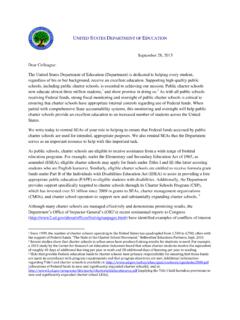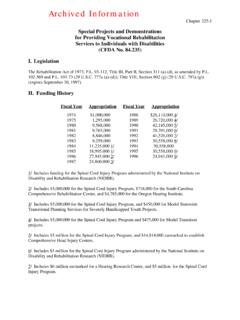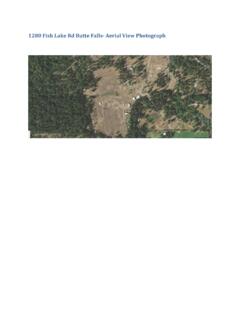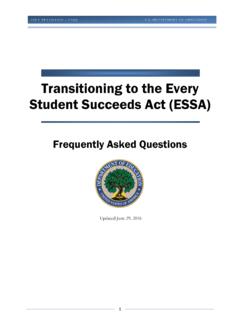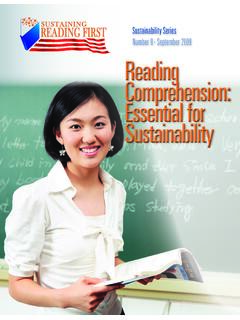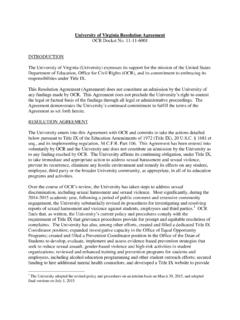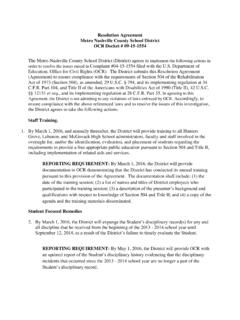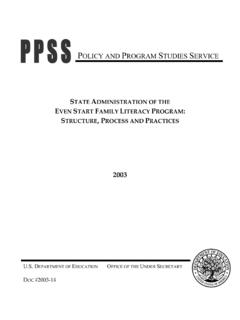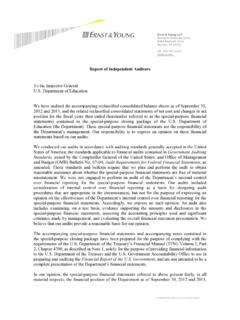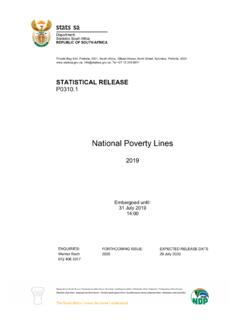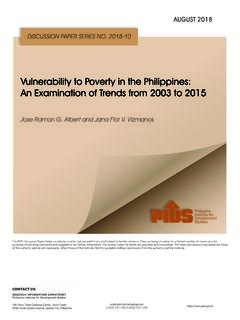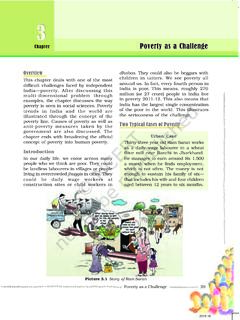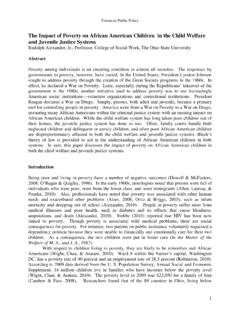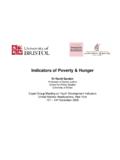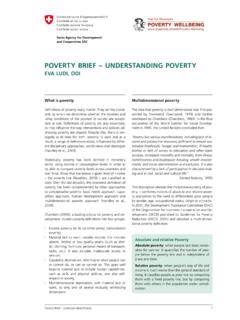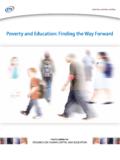Transcription of Educating Students Who Live In Poverty (PDF)
1 PO Box 23071 Tigard, OR 97281 Fax: PeopleEducating Students Who Live In PovertyThank you for choosing a profession where you have opportunities to change lives. Your role in assisting Students to discover their talents, interests, resources and opportunities for gaining an education is critical. The Poverty Training by Dr. Donna M. Beegle, will provide you with a foundation and strategies for assisting your Students from Poverty to become educated. This handout serves as a take away for you to revisit concepts covered in the training and deepen your learning. The stereotypes of people living in Poverty in America are so deeply imbedded in our society that one of the most difficult parts of this training may be to examine your beliefs and open your mind to new interpretations of the behavior of those struggling without basic needs .
2 Doing so, however, is the first step to improving your success and effectiveness with Educating Students in Poverty and helping end the cycle of suffering. Your attitudes and beliefs shapes your tone of voice, your body posture, your facial expressions and your actions towards Students . Questions to reflect on during and after this training: What do you believe causes Poverty ?Where do your beliefs come from? Were they passed down from your parents? Did you learn them from your community? Do you have your own experience with Poverty , are your experiences and exposure to opportunities, while growing up, different than the Students and families you serve? Are you armed with relevant facts about Poverty ? Are you able to suspend judgement and understand people are making the best decisions possible from their perspective?
3 Are you willing to assist Students and families who may believe and respond differently than you? PO Box 23071 Tigard, OR 97281 Fax: Realities in AmericaThe Numbers Far too many people, mostly children, suffer from Poverty conditions. More than 15% of the population, million Americans, live in Poverty (US Census Bureau, 2010). Research shows that it is very difficult for people born into Poverty to achieve an education and earn a living 1 in 4 working households in America ( million families) spend more than half of their pre-tax income on housing. This is a level that experts say is unhealthy, if not impossible, to sus-tain. There is no community in America where minimum wage earners can reasonably afford to pay rent. In February 2012, the National Low Income Housing Coalition conducted a study that examined the cost of housing across the United States and found that no city had rentals priced low enough where a minimum wage earner could live comfortably.
4 In 86% of counties surveyed, even those who earned twice the minimum wage still did not earn enough money to pay rent and other basic Government Assistance falls short of covering basic needs . Many people cling to it because they see no options for earning money for survival with their limited skills, education, and literacy levels. Nationally, the average welfare check for one parent and two children is $478 per month. Twenty years ago, it was $408. The national average added for a baby born to a family already on welfare is $60. The average disability check is $600. Less than 2% of the federal budget is allo-cated for welfare. Food The rates of hunger continue to be extremely high for an industrialized nation. Many people think hunger does not exist because of obesity. The fact is 46 million people suffer food insecurity and one-third of this group experienced chronic hunger.
5 A person on food stamps receives $ per day. Healthy food is expensive. Working Hard Many people work hard and are still not making it. There is a dominant belief in our society that if one works hard enough they will do well. According to the recent census, two-thirds of people living in Poverty are working jobs. Education Youth living in Poverty are the least likely to become educated in our nation. Some schools struggle to address the needs of people in Poverty and help them to succeed. Academic achievement numbers are low for the children of families who struggle to meet their basic needs . People living in Poverty often experience education as stress and see it as a place they do not be-long. A college education appears to be the only possibility to help people break the walls of Poverty and escape its hardships; yet today, it is less likely a person in Poverty will attain a college education than it was in the 1940 s.
6 Effects of Poverty People in Poverty often have internalized their Poverty as a personal defi-ciency. They see no hope for anything but an insufficient welfare or disability check, or underground activities that barely pay enough to keep food on the table and often result in incarceration. Nearly 80 percent of people in prison cannot read at an 8th grade level. Poverty affects education success, health, relationships, and most of all it affects the ability for humans to develop to their full potential. We can do better A deeper understanding of Poverty and the barriers it presents is highly needed. It requires community members and professionals being consistent in saying, Poverty is an issue we are going to address. It requires each and every one of us exploring what is in our hands to make a difference for those living in Poverty .
7 Who do we know that might be able to assist us in breaking barriers to moving out of Poverty ? .PO Box 23071 Tigard, OR 97281 Fax: Meaning of PovertyWhat We Learn is Based on Life ExperiencesThe word Poverty is used to describe many different life situations. Some Students may be from generational Poverty , others may be experiencing working-class Poverty . Each of these life experiences shape expectations, knowledge, confidence and opportunities for gaining an education. Below are some characteristics of different life experiences labeled Poverty . Generational PovertyFamily has never owned land Never knew anyone who benefited from education Never knew anyone who moved up or was respected in a job Highly mobile High family illiteracy Focus is on making it through the day Working-Class PovertyWorking.
8 But rarely have money for any extras Most do not own property Live pay check to pay check Few have health care Focus on making it two weeks or through the month Poverty seen as personal deficiency Immigrant PovertyHave little or no resources Face language and culture barriers S e e m t o d o h a v e a s t r o n g e r s e n s e o f s e l f a n d o f t e n d o better than those born into Poverty in AmericaPoverty is viewed as a system problem Situational Poverty Surrounded by people who are educated or able to earn a living wage Attends school regularly and has health care Has crisis (health, divorce, etc.) and income drops Generally is able to make it back to middle-class Has not internalized the Poverty as personal problem Does not recognize advantages of growing up middle-class Can be harsh judge of those in Poverty PO Box 23071 Tigard, OR 97281 Fax: Gap: Poverty has different meanings in America What Students living in Poverty learnStudents and their families living in the crisis of Poverty receive messages from our culture that they do not belong and something is wrong with them.
9 Here are some of the messages taught to Students and their families experiencing generational, working-class Poverty , and immigrant Poverty : No one cares. Everyone seems smarter. People who are making it must be better than me. We don t belong anywhere. People like us do not get educated. We don t have what we need to break out of Poverty . There is no one to help. What most of America is taught about povertyThink about where you get your information on Poverty ? If you are like most people, it is from television and newspapers. The number one teacher about Poverty in America is the media! However, the media tend to present extremes, sensationalize and dramatize stories. Facts about the real causes and solutions to Poverty are rarely presented and therefore most people remain unaware of Poverty , even in their own communities.
10 Even college educated professionals operate on false knowledge of Poverty . Universities graduate people from college to become teachers, counselors, lawyers, judges, researchers, politicians and other professionals without Poverty 101. Few Americans have had the course, The History of Poverty in the United States of America. We, as a country, do not know our history. We do not know models we have used to address Poverty and we do not know how we have come to our current understanding of Poverty . For many generations, the ignorance on Poverty has promoted stereotypes and leaves people with little or no real understanding of Poverty or its impacts on people. Programs, policies and procedures for helping poor people are created by those who do not fully understand what people in Poverty need to move forward, and as a result, the programs, policies and procedures often punish or fail.
